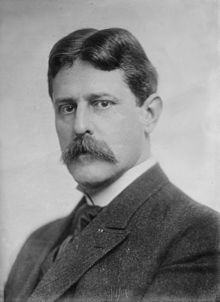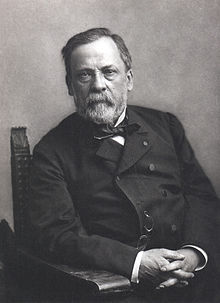The source for the following information (Parts 1-B, C, & D) is Dr. J. Whitridge Williams’ 1914 book “Twilight Sleep: Simple Discoveries in Painless Childbirth” and other historical documents.

Portrait Photo of Dr. J. Whitridge Williams, MD, a gynecological surgeon, professor of obstetrics, Chief of Obstetrics, Johns Hopkins University Hospital, Dean of the university’s School of Medicine, author of the 1914 book on “Simple Discoveries in Painless Childbirth” and one of two “Titans of American Obstetrics” (along with his arch-rival, Dr. Joseph De Lee of Chicago)
In the early 20th century, Dr. J. W. Williams invented the economic engine that first created and now maintains America’s private, for-profit and most often, corporate-owned hospital system. This certainly is an odd heritage for a professor of obstetrics at Johns Hopkins University Hospital who became chief of obstetrics in 1901 and then was appointed Dean of the university’s prestigious School of Medicine at the pinnacle of his career in 1910.
Nonetheless, compelling circumstances in Dr. Williams’ life molded him into an unexpected, even accidental visionary. He saw a ‘big picture’ that was invisible to his elders and his contemporaries and boldly took action.
As a patriotic American and the single most influential physician-leader of his generation, his private dream and public passion was a nation-wide system of general hospitals to rival the nationalized system used in Western Europe for more than two centuries.
As long ago as the 17th century, Western European countries began developing a government-sponsored system of general hospitals, with a dozen or more institutions dispersed between the different regions based on population size. All were available to the public, irrespective of ability to pay.
By the early 20th century, these general hospitals were typically staffed by well-trained professionals, had the up-to-date medical equipment and were able to provide comprehensive services to all ages and for all types of medical and surgical problems.

Typical one-room, 8-bed private, doctor-owned and run hospital of the late 19th and early 20th century
By comparison, the US in the late 19th and early 20th century had plenty of hospitals — 8,000 by one count — but they were very small, private 2-to-10 bed hospitals owned and operated by one or more local doctors.
These overnight clinics and one-room hospitals could not afford to buy state-of-the-art medical equipment (ex. x-ray machines, microscopes, autoclaves), nor did they have an emergency room available to the public. As a for-profit business, their policy was not to provide care to anyone who couldn’t pay out of pocket at the time of service.
The Birth of Technologically-enhanced ‘Modern Medicine’ in the late 19th and early 20th-century
However, the problem Dr. Williams’ identified — lack of a modern, nationwide general hospital system — was real and brought about by the new, world-altering discoveries of biological science made during the late 1800s (Pasteur’s germ theory of infectious disease published in 1881 and first x-ray machine in 1895).
For the first time in human history, the practice of medicine was predictably able to cure many previously uncurable conditions, successfully treat many otherwise fatal injuries and dramatically reduce the suffering of millions.
But many of these scientifically revolutionary breakthroughs required new technologies — diagnostic methods and scientific treatments that depended on large capital outlays for specialized medical equipment. This created a miniature Tsunami of “must have” technology for every ‘modern’ hospital and made running them ever so much more expensive.
Modern medical miracles did NOT come cheap!
Now every ‘modern’ hospital suddenly had to have autoclaves for their surgical instruments, laboratories had to be equipped with microscopes and sterilizers, and radiology departments needed several expensive x-ray machines, lead aprons, and oceans of photographic film. Of course, hospitals had to be remodeled to include operating rooms and other specialty areas and all these new services needed new buildings to house them in.
Unfortunately for the tiny 2-10 bed, one-room private hospitals, the capital-intensive purchases necessary to provide technologically-enhanced care were neither affordable nor available to their patients.
“Follow the Money”
By 1910, hospitals of all kinds — the dozen or so big charitable institutions, teaching hospitals run by universities and 10-bed, one-room for-profit hospitals — were all bleeding red ink. Actually, this was not unusual in the history of hospitals, which goes back to 600 CE. That’s when the Catholic bishop of Paris (later to become St. Landry), started the first charity hospital — Hotel de Deu — on the banks of the Seine (which is still there and still treating patients). This was the start of the Europen tradition of charity hospitals operated by religious orders as part of their vocation to serve the poor.
During this pre-scientific, pre-medical technology era, all big hospitals were charitable institutions, typically run by monks and nuns as places of ‘hospitality’ (the origin of word “hospital”).
These early institutions did NOT provide medical care — no doctor, no therapeutic effort to cure patients of their diseases. Effective medical treatment and pharmaceutical drugs hadn’t been invented yet, so hospitals really were publicly-support hotels that just provided compassionate custodial care — a clean bed, nursing care, hot meals and a friendly environment. This was labor-intensive but not expensive, as the staff consisted of mostly unskilled and semi-skilled workers who cooked and cleaned, changed bandages, gave back-rubs and emptied bedpans, etc.
It was very clear to everyone involved with these charity hospitals that sick people were, in general, a disenfranchized class. As a category, the ill, injured, infants and the elderly have always and will always be the world’s very worst demographic for anyone running a profit-making business. Prior to the 20th century, all big hospitals were either financially supported and run by the Church or funded by State governments. The oddity was the idea that hospitals could and should be run as a profitable business venture. After all, if you want to make money, you go where the money is; when you “follow the money“, it doesn’t lead to sick people.
But our relationship with illness and injury and the people we called ‘healers’ (doctors) and the kind of hospitality dispensed in hospitals was dramatically changed by the startling new discoveries in the biological science in the latter half of the 19th-century dramatically changed.
Before Medical Science, hospitals had little to offer beyond the services of a medical hotel with handmaidens (i.e. nurses) who provided palliative care for symptoms. This could include a potion for pain made from poppies. This opium tincture is known as laudanum, but that was the only effective ‘drug’ in the store. Historically, the relationship of the human species with ill health, grievous injury, horrible disfigurement, debilitating birth defects and the like was prayer, hand-wringing, resignation and ultimately acceptance that “nothing could be done”.
But After Medical Science, the role played by hospitals was almost instantly changed as modern scientific medicine was now able to cure the uncurable, treat otherwise untreatable fatal injuries and dramatically reduce the suffering. To accomplish these medical miracles, scientific ideas were turned into new diagnostic methods and scientific treatments that required new medical technologies. Suddenly hospitals needed to purchase very capital-expensive equipment just to stay competitive and maintain their hospital’s reputation.
Prior to this era of great change, there were only a dozen or so ‘general hospitals in the entire United States. These were usually large charity hospitals supported by the Catholic Church or state governments in the biggest cities of the Eastern seaboard, Chicago, New Orleans, Denver, and on the West Coast, Washington State, San Francisco, and LA.
In single-pointed and solitary pursuit of his dream, Dr. Williams wanted to match the modern national system used in Europe and make fully functional, scientifically equipped general hospitals the rule instead of the exception, so Americans were not dying needlessly because the nearest general hospital was 300 miles away.
Continue to Part 1-C ~ How Dr. Williams’ dream got started
Only Part-1A has a Tiny URL — <https://tinyurl.com/ycee9xv7>, but you can link from the bottom of Part1-A to –> B, C, & D
However, there is a separate Tiny URL for Part 2-a ~ Dr. JWW’s Little Book and the Pentagon Papers, which is <https://tinyurl.y8udohl6>
Word Count 1350





